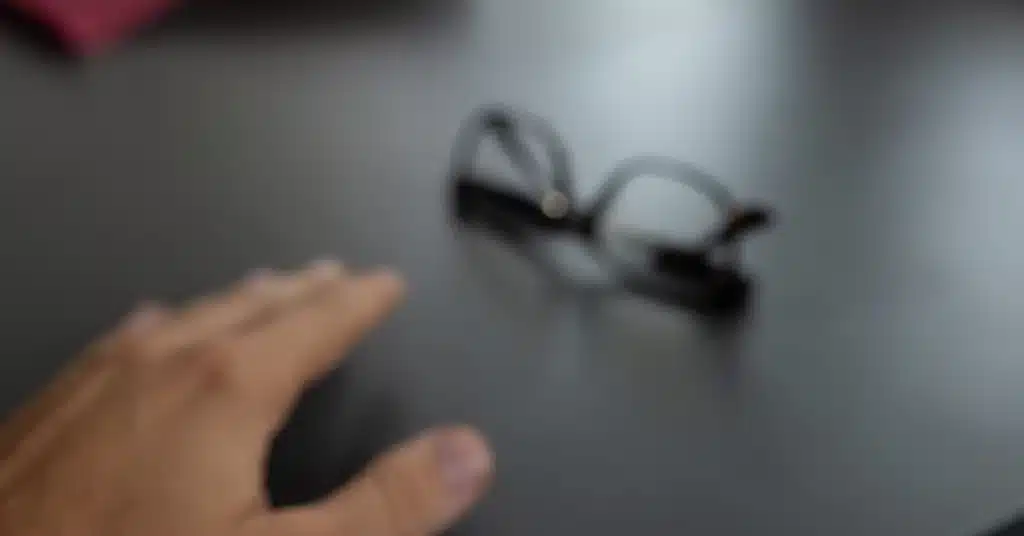Our eyes are one of the most valuable organs in our bodies, enabling us to perceive the splendor of our surrounding world.
This quality of vision can be compromised due to eye conditions such as Glaucoma or Cataract.
A cataract is a clouding of the eye’s lens that impairs vision. In contrast, Glaucoma is a disorder that affects the optic nerve and causes gradual visual loss.
This article will provide an in-depth comparative analysis of Cataracts vs Glaucoma.
It will focus on the difference between symptoms, causes, and treatments between the two conditions.
What is the difference between Cataract and Glaucoma
Both Cataract and Glaucoma are eye disorders that can impair vision, but they have different effects on the eye.
Cataract can cause cloudy vision, while Glaucoma damages the optic nerve.
Let us understand these conditions in depth in order to distinguish them:
Understanding Glaucoma
Glaucoma is a disorder in which the optic nerve is damaged and is often linked to high eye pressure.
There are two types of Glaucoma: open angle and closed angle. Most cases of Glaucoma are open-angle types.
Open-angle Glaucoma is a chronic eye condition characterized by a gradual increase in intraocular pressure.
It leads to potential damage to the optic nerve and gradual vision loss.
In a few cases, the blockage occurs suddenly and is a closed-angle Glaucoma.
There are many causes of Glaucoma, such as an increase in intraocular pressure, which damages the optic nerve and results in visual loss.
Take action before it’s too late. Get Glaucoma medications such as Bimatoprost 0.03% w/v for effective Glaucoma treatment.
Some of the Glaucoma symptoms are:
- Eye Pain or increased fluid pressure
- Frequent headaches due to Glaucoma
- Rainbow halo effects surrounding lights
- Vomiting and nausea
Glaucoma is caused by a buildup of pressure in the eyes, which affects the optic nerves.
Family history, Hypertension, and physical damage to the eyes are all risk factors for Glaucoma.
Medications such as eye drops are prescribed to decrease high eye pressure and protect the optic nerve.
Some individuals opt for laser therapy to help eliminate extra fluid which helps in reducing ocular pressure.
If medicines and laser therapy fail to control Glaucoma, doctors may recommend surgery to remove extra fluid from the eyes.
Understanding Cataract
 Source: zoranm_from_Getty_Images
Source: zoranm_from_Getty_ImagesCataract is an eye condition where the lens of the eye becomes cloudy, leading to a loss of clarity and blurred vision.
Some common symptoms of Cataract are:
- Cloudy or blurry vision
- Night vision difficulties
- Colors appear faded
Cataracts are primarily caused by protein breakdown in the eye lens and are associated with aging.
Other causes of Cataracts include Diabetes, a history of Cataracts in the family, and UV radiation.
When it comes to treatment for Cataracts, surgery is the only option available.
It is only advised if it impacts and interferes with our everyday responsibilities.
The National Eye Institute (NEI) suggests that a licensed doctor should treat Cataracts to avoid side effects.
Cataracts vs Glaucoma: A Comparative Analysis
Cataract and Glaucoma are common eye conditions affecting a large population of people.
Both conditions are frequently associated with aging.
Regular eye exams and early discovery are required for optimal management to avoid potential risks.
Here’s a comparison table to help you know more about these conditions:
| Characteristics | Cataract | Glaucoma |
|---|---|---|
| Symptoms | Blurry vision, glare sensitivity, faded colors, and poor night vision | Gradual loss of peripheral vision, tunnel vision, eye pain, headache |
| Causes | Age, UV exposure, Diabetes, smoking, eye injuries, and medications are all factors to consider. | Increased intraocular pressure, age, family history of Glaucoma, ethnic background, and medical problems are all factors to consider. |
| Treatment | Removal of the cloudy lens through surgery and inserting artificial lens | Medication such as Glaucoma eye drops, laser therapy, and surgery |
| Progression | Gradual progression over time | Slow progression, irreversible loss, might be rapid in few cases |
| Common age of onset of action | Usually, after the age of 40’s | Typically after the age of 40’s |
Early detection, regular eye exams, and appropriate treatment are essential for both conditions to maintain and retain vision properly.
If you have any symptoms, immediately see a doctor for early detection and treatment.
Summing up
Cataracts and Glaucoma are eye conditions that might affect the vision in individuals.
Comparing “Cataracts vs Glaucoma” might help you understand how they influence your eyesight.
Glaucoma is caused by a buildup of pressure in the eyes. In contrast, Cataracts are caused by changes in the eye that result in cloudiness.
Surgery can restore vision in Cataract-related vision loss by replacing the clouded lens with a clear artificial one.
Glaucoma-related vision loss is irreversible; eyesight cannot be entirely regained once lost.
To prevent potential risks and side effects, always seek the advice of a skilled doctor while seeking treatment.
Frequently Asked Questions
Can you have Cataract surgery if you have Glaucoma?
Yes, Glaucoma patients can get Cataract surgery. However, it is critical for the surgical strategy to consider and control Glaucoma.
This helps avoid any negative effects on intraocular pressure before and after the surgery.
Is vision loss due to Glaucoma and Cataracts reversible?
Yes, vision loss caused by Cataracts can be reversed with surgery. The loss of eyesight caused by Glaucoma, on the other hand, is irreversible.
As a result, it is important to treat Glaucoma as soon as possible. If you are suffering the symptoms of Glaucoma, you should see a healthcare expert immediately.
What’s the recovery process after Cataract surgery and Glaucoma treatment?
After Cataract surgery, most people see an improvement in their eyesight within a few days. Recovery from Glaucoma therapy varies depending on the treatment, but regular check-ups are required to monitor progress.
Can having Cataracts increase the risk of developing Glaucoma?
The presence of Cataracts does not raise the chance of developing Glaucoma.
Although they are distinct eye disorders, they can coexist in some circumstances.
Regular eye check-ups are essential for tracking these disorders.
Are there any risk factors that make someone more prone to Cataracts or Glaucoma?
Various risk factors can increase one’s chances of developing Cataracts or Glaucoma.
Age, Diabetes, obesity, and a family history of the condition are common risk factors for Cataracts.
On the other hand, age, a family history of Glaucoma, and Hypertension are common risk factors for Glaucoma.
When referencing outside resources, GoodrxMedicine always provides full citations. To learn more about the measures we use to maintain the quality of our content, please review our Content Information Policy.











